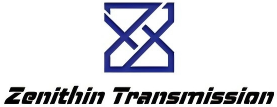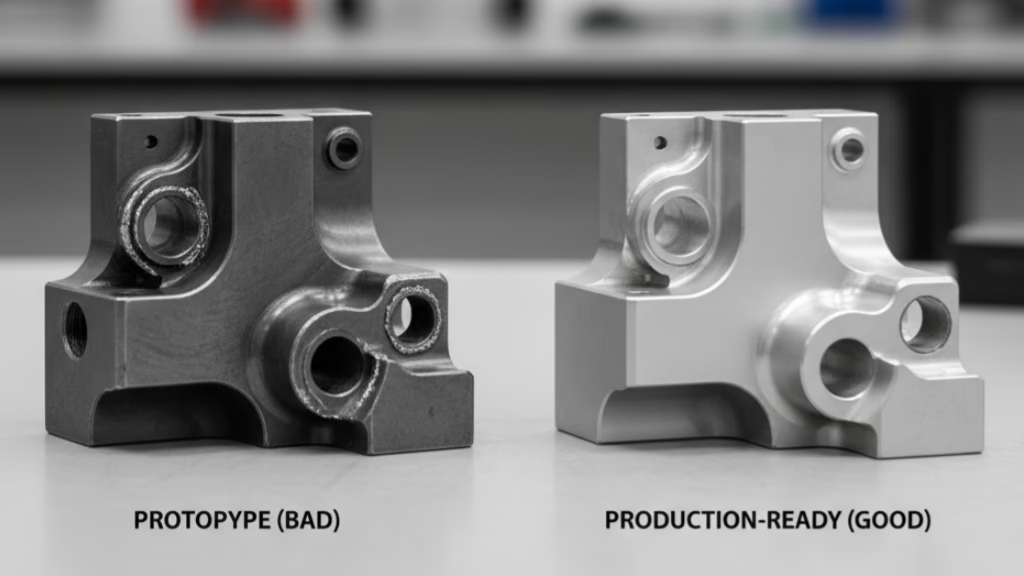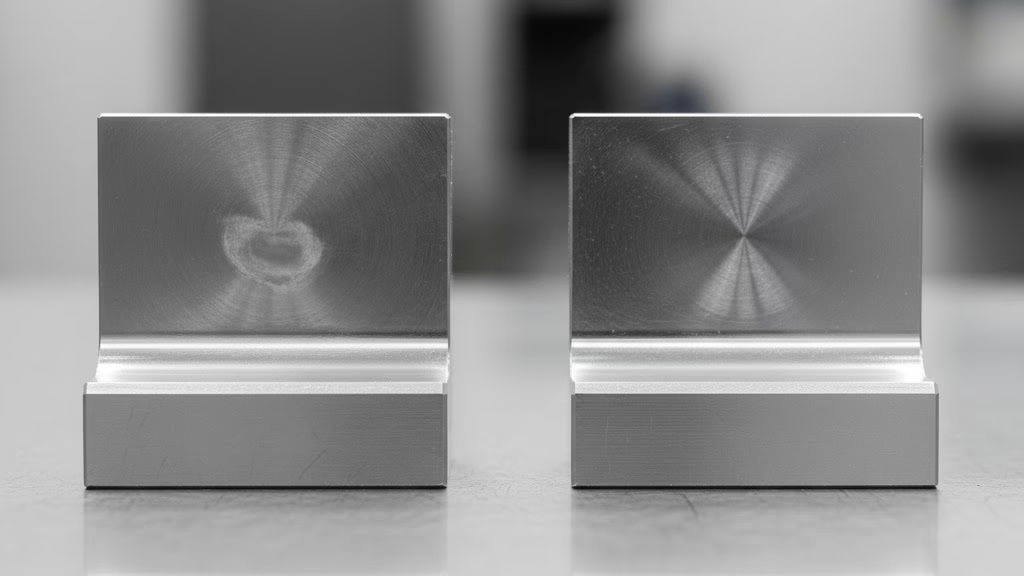Deje de permitir que los defectos imprevistos del mecanizado CNC retrasen sus proyectos y destruyan su presupuesto. Le mostraremos el marco de trabajo probado para identificar las causas fundamentales de los defectos más comunes, desde imprecisiones dimensionales hasta alabeos, y evitarlos antes de que se produzcan.
Los 5 defectos más comunes del mecanizado CNC son la imprecisión dimensional, el mal acabado superficial, las marcas de vibración, las rebabas y el alabeo. La prevención pasa por un enfoque sistemático centrado en un sólido diseño para la fabricación (DFM), un aprovisionamiento inteligente de proveedores basado en el coste total de propiedad (TCO) y controles de proceso claros, como el alivio de tensiones del material y trayectorias de herramientas optimizadas.
Ahora es el momento de profundizar en las estrategias específicas y los estudios de casos reales que le ayudarán a eliminar estos problemas para siempre.
Guía de diagnóstico para los líderes sobre los "5 grandes" defectos del CNC
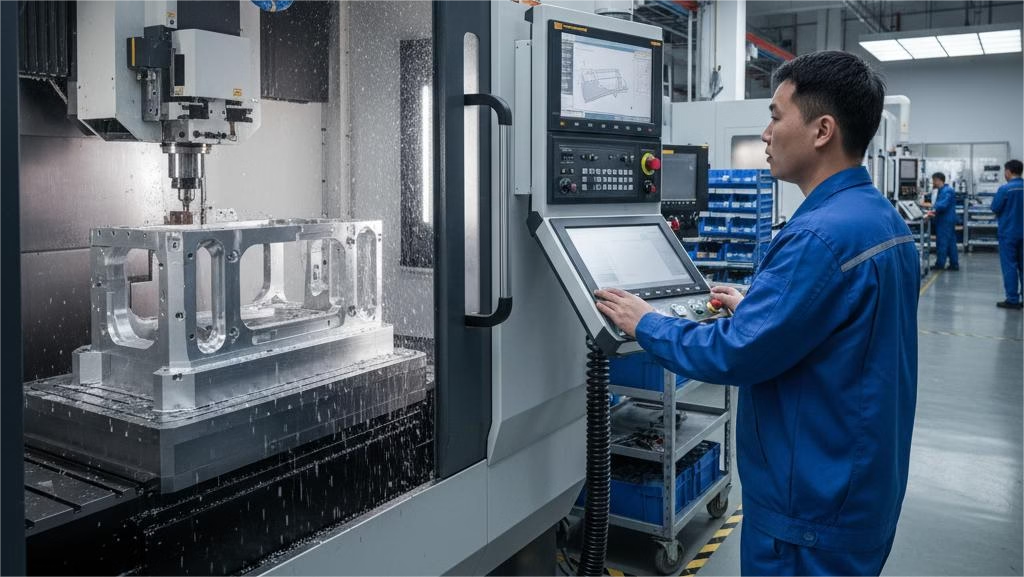
Para gestionar eficazmente un proyecto, hay que ir más allá de la simple identificación de un fallo y comprender sus implicaciones para la empresa y sus causas profundas.
He aquí un desglose de los cinco defectos de mecanizado CNC más comunes desde el punto de vista de un jefe de proyecto.
1. Inexactitud dimensional
No hay nada más frustrante que una pieza que parece perfecta pero no se monta. Esta es la costosa realidad de la imprecisión dimensional.
- El impacto empresarial: Cuando una pieza está fuera de tolerancia, puede detener la cadena de montaje, provocar fallos de rendimiento en el producto final y, en el peor de los casos, desechar toda la producción.
- Análisis de la causa raíz: Aunque es fácil culpar a la máquina, el verdadero culpable suele ser más complejo. Podría tratarse de una tolerancia demasiado ambiciosa especificada en la fase de diseño. En el taller, factores como el desgaste de la herramienta, la dilatación térmica durante el mecanizado o una presión de apriete incoherente desempeñan un papel importante.
- Una experiencia con la "misteriosa" deformación: Una vez nos enfrentamos a un problema crítico con un bastidor aeroespacial de aluminio de gran tamaño que seguía deformándose después del mecanizado, lo que hacía que todas las dimensiones quedaran fuera de tolerancia. La máquina era perfecta y el programa correcto. ¿El culpable? Tensiones internas ocultas en la materia prima. Al mecanizar el material de un lado, liberábamos esta tensión, provocando la deformación de toda la pieza.
- La solución: La solución no estaba en la máquina, sino en el proceso. Para este tipo de piezas, ahora aplicamos un protocolo de alivio de tensiones, que implica varias etapas de mecanizado con un proceso de tratamiento térmico en medio. De este modo se neutraliza la tensión del material antes de realizar los cortes de acabado finales, que son críticos y garantizan la estabilidad dimensional.
2. Mal acabado superficial
Un acabado superficial deficiente no es sólo un problema estético; a menudo es señal de problemas de proceso más profundos y puede tener graves consecuencias funcionales.
- El impacto empresarial: En el caso de piezas que requieren una junta o el ajuste de un rodamiento, una superficie rugosa puede provocar fugas o un desgaste prematuro. En aplicaciones sometidas a grandes esfuerzos, un mal acabado puede incluso convertirse en el punto de partida de grietas por fatiga, comprometiendo la fiabilidad del producto a largo plazo.
- Análisis de la causa raíz: Las causas más comunes son unos parámetros de corte inadecuados (avance y velocidad del husillo), el uso de una herramienta de corte desgastada o de un tipo incorrecto, o las vibraciones de la máquina.
- Tomar una decisión con conocimiento de causa: No todas las superficies tienen que ser lisas como un espejo. Exigir un acabado innecesariamente fino puede aumentar drásticamente los costes. He aquí una guía rápida:
- Ra 3,2 μm (125 μin): Un acabado estándar y económico adecuado para la mayoría de las piezas.
- Ra 1,6 μm (63 μin): Un acabado de alta calidad para piezas que requieren un buen sellado o aspecto.
- Ra < 0,8 μm (32 μin): Un acabado de precisión, que a menudo requiere operaciones secundarias como rectificado de precisiónlo que aumenta considerablemente el coste.
Conocer estos puntos de referencia le ayudará a especificar un acabado que sea a la vez funcional y económico.
3. Marcas de charla
Chatter es ese patrón ondulado distintivo en una superficie que grita "problema". No es sólo feo; es un signo de vibración violenta durante el proceso de corte.
- El impacto empresarial: El castañeteo casi siempre significa que la pieza es chatarra. También acorta drásticamente la vida útil de sus herramientas de corte y, en casos graves, puede incluso causar daños a largo plazo en el husillo y los rodamientos de la máquina CNC, una reparación muy costosa.
- Análisis de la causa raíz: La causa principal es siempre la falta de rigidez en alguna parte del sistema. Puede ser la propia máquina, una fijación mal diseñada, la pieza de trabajo que no se sujeta con seguridad o, lo que es más habitual, la configuración de la herramienta de corte. En Dr. Scott Smithexperto en dinámica de mecanizado, explica que la vibración no es aleatoria. Es una inestabilidad predecible basada en la física del sistema.
- El poder de las proporciones: He aquí un dato crítico que muchos ingenieros pasan por alto: la rigidez de una herramienta es inversamente proporcional a la cubo de su longitud de sobresaliente del portaherramientas. Esto significa que si se duplica el voladizo de una herramienta, no se duplica la desviación, sino que aumenta en ocho veces (2³). Este es a menudo el factor más importante que provoca el parloteo.
- La solución: La solución inmediata es utilizar la herramienta más corta y robusta posible para el trabajo. Pero los principales fabricantes van un paso más allá. Ahora utilizan software de simulación de mecanizado para crear un "gemelo digital" del proceso de corte. Esto les permite predecir dónde se producirán las vibraciones en función de la geometría de la pieza y las trayectorias de las herramientas elegidas, eliminándolas en el mundo digital antes de cortar una sola pieza de metal.
4. Rebabas y bordes afilados
Una pequeña rebaba metálica puede parecer un problema menor, pero puede tener consecuencias importantes.
- El impacto empresarial: Las rebabas pueden impedir que las piezas se ensamblen correctamente, suponer un riesgo para la seguridad de los técnicos o desprenderse y contaminar sistemas delicados como los hidráulicos o los electrónicos.
- Análisis de la causa raíz: Las rebabas suelen formarse cuando se utiliza una herramienta de corte sin filo o por una estrategia de trayectoria de la herramienta que no tiene en cuenta la forma en que la herramienta sale del material.
- Una experiencia "Fatal Burr": Una vez fabricamos miles de pequeñas piezas de acero para una cadena de montaje automatizada. Las piezas eran perfectas desde el punto de vista dimensional, pero quedaba una rebaba diminuta, casi imperceptible, dentro de un orificio taladrado en cruz. Esa única rebaba bastó para atascar la pinza robótica del cliente, provocando la parada de toda su multimillonaria línea de producción.
- La solución: Esto nos enseñó una lección vital: la calidad de una pieza se define por su rendimiento en la aplicación, no sólo por los números de un plano. Ahora analizamos de forma proactiva el uso final de los componentes que fabricamos. Esto nos permite aplicar procesos de desbarbado más refinados, garantizando que las piezas que entregamos sean realmente "plug-and-play" para su sistema.
5. Alabeo y deformación
Al igual que la imprecisión dimensional, el alabeo es un defecto frustrante en el que la pieza cambia de forma tras el mecanizado, especialmente común en componentes de paredes finas o de gran tamaño.
- El impacto empresarial: Una pieza alabeada no superará ninguna inspección de planitud, rectitud u otras tolerancias geométricas (GD&T), por lo que quedará inutilizada.
- Análisis de la causa raíz: Los principales culpables son, una vez más, la liberación de tensiones internas del material, una sujeción inadecuada que doble físicamente la pieza antes del corte o el calor generado durante un mecanizado agresivo.
- La solución: La clave es un proceso robusto. Esto implica una estrategia de mecanizado en varias fases. A menudo realizamos una operación de "desbaste" para eliminar la mayor parte del material, luego un tratamiento térmico para normalizar la pieza, seguido de ligeras pasadas de "acabado" para llevarla a la dimensión final. Es un enfoque más metódico, pero es la única forma de garantizar la estabilidad y precisión que exigen sus diseños.
| Defecto | Causas principales | Estrategia clave de prevención |
|---|---|---|
| Inexactitud dimensional | Tensión del material, desgaste de la herramienta, efectos térmicos | Tratamiento térmico de alivio de tensiones, control de procesos |
| Mal acabado superficial | Velocidades/avances incorrectos, herramientas desgastadas, vibraciones | Optimización de parámetros, análisis DFM |
| Marcas de charla | Falta de rigidez del sistema (herramienta, fijación, máquina) | Minimizar el voladizo de la herramienta, sujeción segura del trabajo |
| Rebabas y bordes afilados | Herramientas sin filo, mala estrategia de salida de la trayectoria de la herramienta | Trayectorias CAM optimizadas, desbarbado secundario |
| Alabeo y deformación | Liberación de tensiones internas del material, fuerza de sujeción | Estrategia de mecanizado multietapa |
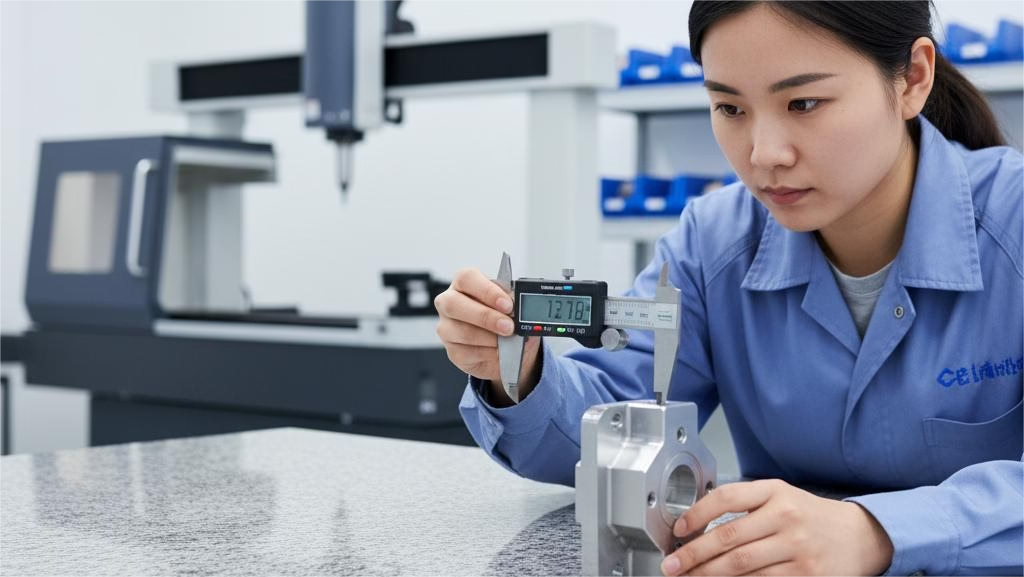
El marco de la prevención: De lo reactivo a lo proactivo
Corregir los defectos es necesario, pero prevenirlos es revolucionario.
Cambiar de mentalidad y pasar de un modelo reactivo de "encontrar y arreglar" a una estrategia proactiva de "prevenir y perfeccionar" es lo más poderoso que puede hacer para reducir el riesgo de sus proyectos. He aquí un marco basado en tres pilares fundamentales que le ayudará a conseguirlo.
Pilar 1: Aplicar un diseño defensivo
La forma más eficaz de eliminar un defecto es diseñarlo fuera de la pieza antes de que llegue a la máquina.
Como subrayaba a menudo el difunto Dr. David Dornfeld, de la Universidad de Berkeley, muchos defectos de fabricación son simplemente síntomas de un diseño que no se optimizó para su proceso de fabricación.
Para ponerlo en práctica, incorpore un Diseño para la fabricación (DFM) comprueba tu proceso. Antes de finalizar un diseño, hágase estas sencillas preguntas:
- Radios internos: ¿Todas las esquinas interiores están diseñadas con un radio mayor que el radio de la herramienta de corte? Una esquina interior afilada es físicamente imposible de mecanizar y requiere un costoso procesamiento secundario.
- Espesor de pared: ¿Son las paredes lo suficientemente gruesas como para soportar las fuerzas de mecanizado sin vibrar ni deformarse? Una buena regla general es mantener espesor de pared superior a 1 mm.
- Profundidad del agujero: ¿Está diseñando agujeros profundos y estrechos? Un orificio con una profundidad superior a 10 veces su diámetro resulta exponencialmente más difícil y costoso de mecanizar con precisión.
¿Se enfrenta a un reto de diseño complejo?
Nuestros expertos en DFM pueden ayudarle a optimizar sus piezas para una producción rentable y sin defectos. Asegurémonos de que su diseño está listo para la fabricación.
Pilar 2: Adoptar la contratación inteligente
La seducción del precio más bajo por pieza es una trampa peligrosa.
Como afirmó el Dr. John S. Oakland, pionero de la gestión de la calidad, una estrategia basada en la inspección final para detectar defectos es mucho más cara que invertir en un proceso que evite que se produzcan.
Esta es la idea central que subyace al cambio de enfoque del Precio por Componente (PPC) al Precio por Componente (PPC). Coste total de propiedad (TCO). El presupuesto más barato puede proceder de un proveedor que recorta gastos en utillaje, se salta pasos cruciales de desbarbado o utiliza material incoherente, lo que le genera a usted mayores costes de inspección, problemas de montaje y fallos sobre el terreno.
- La trampa del prototipo: Una vez tuvimos un cliente que aprobó un prototipo impecable, sólo para ver una tasa de fallos 30% en la primera tirada de producción. ¿Por qué? El prototipo se fabricó en condiciones de laboratorio "perfectas". Sin embargo, el proceso de producción estándar del proveedor no era lo suficientemente sólido como para mantener esa calidad a gran escala. Un prototipo de éxito no es el que se puede fabricar; es el que se puede hacer repetida y económicamente.
Pilar 3: Crear una asociación sólida
Su proveedor no es sólo un vendedor; es un socio en el éxito de su proyecto.
Un colaborador verdaderamente capaz acogerá con agrado las preguntas difíciles porque le permitirán demostrar su experiencia. Cuando examinar a un posible proveedorVaya más allá de su lista de máquinas y pregunte:
- ¿Cómo se garantiza la trazabilidad de los materiales y se gestionan las tensiones internas de las piezas sensibles?
- ¿Qué software CAM y de simulación utiliza para validar sus trayectorias de herramienta antes del corte?
- ¿Puede compartir un plan de control de calidad (PCC) para una pieza similar a la nuestra?
Estas preguntas le ayudarán a calibrar su profundidad técnica y su compromiso con una cultura de calidad proactiva, que es la base de una relación de fabricación sin defectos.
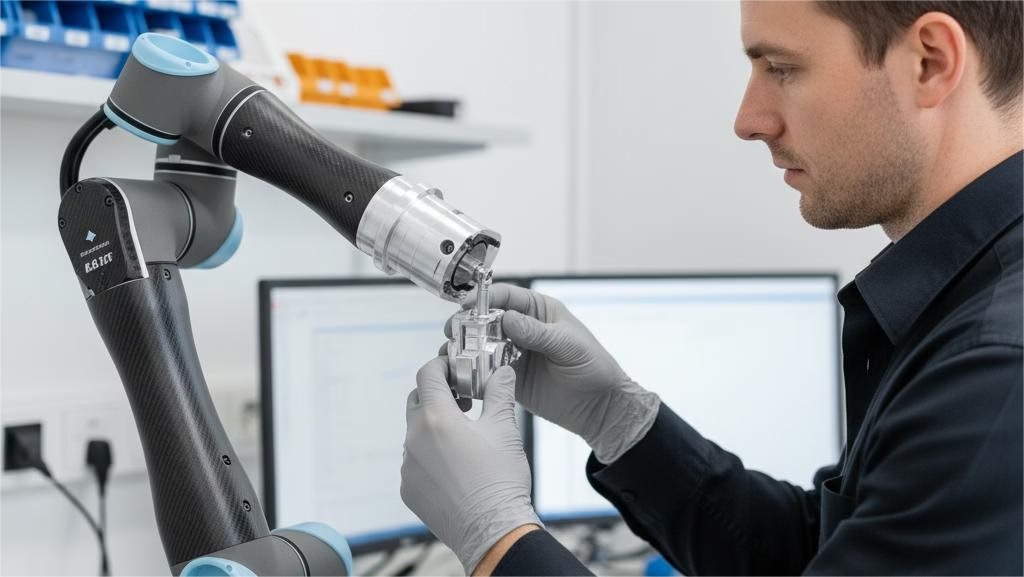
Su próximo paso hacia una fabricación sin defectos
El mecanizado CNC con cero defectos no es un objetivo irreal. Es el resultado de un enfoque sistemático que valora más la previsión que la extinción de incendios.
Alcanzar este nivel de calidad no es cuestión de suerte, sino que se deriva de un sólido marco de gestión de riesgos que abarca todas las fases, desde el diseño y el abastecimiento hasta la producción final. Para ello se requiere una gran experiencia, una comunicación transparente y, lo que es más importante, un socio de fabricación en el que se pueda confiar de verdad.
¿Le preocupa que su diseño actual pueda albergar riesgos de fabricación ocultos? No lo deje al azar.
Cargue su archivo CAD hoy mismo y nuestro equipo de ingenieros le ofrecerá un presupuesto gratuito y sin compromiso. Análisis de fabricabilidad e informe de evaluación de riesgos.
Le ayudaremos a identificar y eliminar más de 90% de los defectos comunes de mecanizado CNC antes de que se fabrique la primera viruta. Es el primer paso para garantizar que su proyecto no solo tenga éxito, sino que sea predecible.
¿Está preparado para crear una cadena de suministro sin defectos?
Ya ha aprendido el marco. Ahora, asóciese con un equipo que se rige por él. Convirtamos sus exigentes diseños en piezas perfectas en todo momento.
Referencias y notas
[1] Dinámica de mecanizado: Los principios debatidos en relación con la vibración y la rigidez del sistema son fundamentales en el campo de la dinámica del mecanizado, ampliamente investigado por expertos como el Dr. Scott Smith. Su trabajo se centra en convertir la naturaleza impredecible de las vibraciones en un problema de ingeniería solucionable mediante el análisis de la respuesta en frecuencia.
[2] Coste total de propiedad (TCO): Este concepto de contabilidad de gestión fue popularizado por Gartner. Se utiliza para evaluar el coste del ciclo de vida completo de un activo, incluyendo su adquisición, explotación y enajenación, proporcionando una base financiera más precisa para la toma de decisiones que el precio de compra por sí solo.
